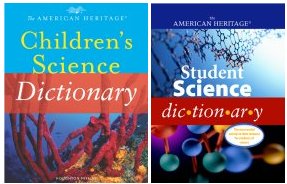Look into My Eyes Additional Information
You can learn more about Shree Nayar’s research on reflections and eye tracking at www1.cs.columbia.edu/CAVE/projects/eyes_relight/eyes_relight.php and www1.cs.columbia.edu/CAVE/projects/world_eye/world_eye.php (Columbia University).
To see a video on eye tracking, click here.
To see a video on eyes for relighting, click here.
To learn how historians can glimpse the surroundings of a person in an old photograph, go to www1.cs.columbia.edu/CAVE/projects/publicity/daguerro_article_2005.pdf (Daguerreian Society).
Books recommended by SearchIt!Science:
![[book]](https://www.sciencenewsforstudents.org/wp-content/uploads/2019/11/a1398_b1763.jpg) |
Mirrors: Finding Out About the Properties of Light
Published by William Morrow/HarperCollins, 1992.
This book shows readers how to make hysterically funny faces and create optical illusions through the magic of mirrors. But mirrors really aren’t magic. They simply bend and reflect light to produce images. Here you’ll find lots of mirror experiments and games using materials you have around the house. There are drawings and explanations of each project. |
![[book]](https://www.sciencenewsforstudents.org/wp-content/uploads/2019/11/a1398_b2201.jpg) |
Light Action! Amazing Experiments with Optics
Published by HarperCollins, 1993.
How do sunglasses work? How does a plant turn light into food? What makes a pencil look as if it’s bent when you put it in a glass of water? All these things happen because of light’s amazing properties. Light can bend, bounce, scatter, and be blocked and reflected. The author of this book suggests more than 65 activities to investigate light, optics, color, and physics. From making a ghost to exploring photosynthesis, you’ll find out how light works and how important it is. Each chapter includes an explanation of the activity, a list of materials needed, a procedure, and an explanation of the results. Black-and-white drawings and diagrams illustrate the experiments. Don’t miss the stressed-out gelatin or the hot-air mirages! |
![[book]](https://www.sciencenewsforstudents.org/wp-content/uploads/2019/11/a1398_b3675.jpg) |
Science Projects About Light
Published by Enslow Publishers, 1994.
Does light travel in straight lines? When is a shadow fuzzy? How is sunlight converted to power? What causes afterimages? The projects in this book suggest ways to explore the properties of light. Some of the projects are suitable for science fairs. Each experiment provides an explanation, a list of materials, black-and-white drawings, and a description of the procedure. |
Power Words
cornea The transparent outer covering of the eyeball that covers the pupil and iris. The cornea is a membrane.
ellipse A curved shape that looks like an oval or a circle that is flattened at opposite ends.
iris The colored part of the eye around the pupil. The iris is a muscle that controls how much light gets into the eye through the pupil.
mirror A surface, such as glass coated with a metal, that reflects light. Mirrors are used in science in many ways. They gather light in reflecting telescopes, direct light in making holograms, and help increase the strength of light in lasers.
pupil The opening in the center of the iris through which light enters the eye.
reflection The throwing back of a wave, such as a wave of light or a sound wave, when it runs into an obstacle, such as a mirror or wall.
Copyright © 2002, 2003 Houghton-Mifflin Company. All rights reserved. Used with permission.
